The Sherpas’s ability to forget
“I don’t have any ambitions to climb Mount Everest,” says Ang Dorjee Sherpa. “Too dangerous! Finally, I have a wife and three children.” However, the 47-year-old was a member of Everest expeditions twice. At the end of 1991, Ang Dorjee worked as “Mail Man” for a Japanese expedition who wanted to climb the mighty Southwest Face for the first time in winter. The Sherpa brought the news of the failure at 8,350 meters as “postal runner” into the valley. Two years later the Japanese were back again – and successfully: A total of six climbers reached the summit on a partially new route, the first team on 18 December 1993. The first ascent of the wall in (meteorological, not calendrical) winter was done. That time, Ang Dorjee did not play the postman, but worked as a cook for the Japanese.
![]() read more
read more
Dorje’s Everest sabbatical
Dorje Sherpa is familiar with Everest disasters. In 1996, 20 years ago, he reached the summit of the highest mountain on earth for the first time. Then he belonged to the IMAX film team of the American David Breashears, when a storm in the summit area killed eight climbers within 24 hours. “We were then in Camp 2 at 6,400 meters”, the 50-year-old tells me in his “Buddha Lodge” in the village of Phakding, which lies on the popular trekking route to Everest Base Camp.
![]() read more
read more
Still no light at the end of the tunnel
Chautara appears as if the devastating earthquake had hit it recently, not almost eleven months before. About 15,000 people are living in the city at an altitude of 1,500 meters, the administrative headquarter of Sindhupalchowk District, which was particularly hard-hit by the earthquake on 25 April last year. On the main street many ruined houses still witness to the disaster that killed more than 3,500 people in this mountain region. In many villages about 90 percent of the houses collapsed. The cleanup is progressing slowly. Too heavy are the wounds that the earthquake has ripped, not only at the buildings, but also for the city’s inhabitants. “There is still a very great problem of health,” says doctor Sabina Parajuli. “Those who were injured that time, have not fully recovered because of lots of problems, especially in their limbs. They were operated at that time and not able to do their normal activites. They were the only family members with income, but they are not working and are not getting money. And the other family members are busy with taking care of them.” In addition, infectious diseases such as vomiting or diarrhea spread quickly because the people live in crowded shelters.
![]() read more
read more
“We are ready” in Thulosirubari
“They lost their houses and all their property, but they didn’t lose their plans,” says Arjun Gatraj about the people of his native village Thulosirubari. “There is still hope.” Not only for better times for themselves, but also for their children. “They feel that education is important for their children. They sent them directly after the earthquake as soon as we started the school again.” Arjun is the chairman of the school committee of Thulosirubari, a small mountain village, about 70 kilometers from the Nepalese capital Kathmandu. Almost every family has been affected by the earthquake. “75 people died, among them eight of our students”, Arjun tells me during my visit in Thulosirubari. “About 1800 houses were destroyed, only 30 to 40 are still intact.”
![]() read more
read more
Shocks with continuing impact
“I am now 57 years old,” says Sunil. “And that was the most dramatic experience I ever had.” The Nepalese is talking about 25 April last year, when the earth shook Nepal. Nearly 9,000 people were killed. Then Sunil was among 2,500 guests of an event in a hall in the capital Kathmandu.”Suddenly the whole building began to shake. All people hurried towards the exit, which was much too small for this sudden rush”, Sunil recalls. “The people fell over each other, there was a panic. I thought there’s no point, I have to stay inside. If I will not survive, so be it.” The hall withstood the tremors. Sunil escaped with a fright.
![]() read more
read more
Mingma Sherpa: “In the end price matters”
The upcoming spring season on Everest casts its shadows before. Ten “Icefall doctors” were sent to the Base Camp on the Nepalese side of the highest mountain on earth to prepare the route for the commercial expeditions. In the past two years, there had been no summit successes from the south (I deliberately ignore the “success” of Chinese climber Wang Jing and her Sherpa-Team in 2014 who had been flown to Camp 2 by helicopter). In 2014, the spring season had prematurely ended after an ice avalanche in Khumbu Icefall had killed 16 Nepalese climbers. In 2015, the 25 April earthquake had triggered a huge avalanche from Pumori that had hit Everest Base Camp and killed 19 people.
On Monday, the Nepalese cabinet – at last! – gave green light for the extension of the 2015 climbing permits by two years. “It is a welcome move from the government that we hope will help bring back the climbers to the mountains”, said Ang Tshering Sherpa, president of the Nepal Mountaineering Association. But it might be too late for many of the about 800 climbers who got a 2015 permit, including 357 Everest aspirants, to return already this spring.
I asked Mingma Gyalje Sherpa about the upcoming season. The 29-year-old, who has already climbed seven eight-thousanders and recently made headlines by solo climbing the difficult West Face of 6685-meter-high Chobutse for the first time, is head of the Kathmandu based expedition and trekking operator Dreamers Destination.
Mingma, the spring season is around the corner. What do you expect, especially on Mount Everest?
![]() read more
read more
Blockade in Nepal declared ended
Two reasons to celebrate in Nepal: Just in time for Losar, the Tibetan New Year, an end of the supply crisis in the Himalayan state is on the horizon. After more than four months, leaders of the Madhesi ethnic group declared their blockade of the border with India ended. The Madhesi, who live in southern Nepal, felt disadvantaged by the country’s new constitution. Meanwhile, it has been changed in some respects. The blockade had paralyzed Nepal. The reconstruction work after the earthquake in spring 2015 had come to a virtual standstill. Fuel and building materials as well as food and medicine had run short because the imports from India had been staying away. Since the weekend, tank trucks are rolling towards Kathmandu again.
![]() read more
read more
Brice: “Easy to make statements and then do nothing”
He is the doyen of the western expedition operators. The New Zealander Russell Brice has been leading expeditions to the Himalayas since 1974. Hardly any of his colleagues has so much experience as the 63-year-old head of Himalayan Experience, not only in organizing trips to the eight-thousanders but also in dealing with the authorities. It is something that has almost been forgotten, that Russell at an earlier age was an excellent high altitude climber – and an Everest pioneer: Along with the Briton Harry Taylor he first climbed the Three Pinnacles on the Northeast Ridge in 1988.
I wanted to know what Brice thinks about the current situation in Nepal:
Russ, for this spring Himalayan Experience is offering expeditions in Nepal to Mount Everest and Lhotse. How great is the demand?
Very small numbers compared to past years.
Do you notice an impact of the events in 2014 (avalanche in Khumbu Icefall) and 2015 (earthquake and avalanche that hit Everest BC) on your client’s attitude?
![]() read more
read more
No prospect of spring fever in Nepal
If there is a season, which stands for optimism, it’s spring: Winter is leaving, it’s getting warmer, brighter, more colorful. This may entice people painting the world more beautiful than it is soberly assessed. Also the people in Nepal long for spring, in the hope of better times. 2015 was a bad year for the country. First the devastating earthquake in spring that killed according to official figures more than 8800 people. And were this not bad enough, the blockade of the border to India, now continuing for almost four months. There is still no sign of spring fever in Nepal.
![]() read more
read more
Hansjoerg Auer: “I miss Gerry”
For sure, it was an amazing highlight of alpinism, but a shadow falls across. At the end of October – as reported – the Austrians Hansjoerg Auer, Alexander Bluemel and Gerhard Fiegl first climbed the South Face of the 6,839-meter-high Nilgiri South in the Annapurna massif in Nepal. Five previous expeditions, top climbers from Japan, Czech Republic and Slovakia, had failed to climb the wall. However, the success of the Austrian trio turned into a tragedy: While descending, Gerry, manifestly suffering from high altitude sickness, fell to his death several hundred meters deep, three days after his 27th birthday – while his friends were looking on in horror. A few days later, the search for Fiegl was abandoned.
Hansjoerg Auer sustained frostbite on six toes. Meanwhile the feeling in his toes has returned and he can climb again, the 31-year-old tells me. Next spring, he wants to set off along with his compatriot David Lama to a “cool, very difficult destination”. He doesn’t yet reveal, where it will be. I’ve talked to Hansjoerg about what happened in late October.
Hansjörg, you succeeded in making the amazing first ascent of the South Face of Nilgiri South. But on the descent your teammate Gerry Fiegl fell to his death. Does this tragic end make everything else fade into the backround?
![]() read more
read more
If savings are made at the wrong end
“I am not in the government to wait and see”, Ananda Prasad Pokharel said in early November after his appointment as the new Nepalese Tourism Minister. “I am here to change.” However, one of his first initiatives concerning mountain tourism doesn’t testify his farsightedness but looks more like a crazy idea. Pokharel’s ministry plans to reduce the insurances for Nepalese staff on expeditions – by up to 60 percent on mountains that are lower than 6,500 meters. Thus mountain tourism should be stimulated again, it said. The visitor numbers in Nepal had slumped dramatically after the devastating earthquake in April and also because of the still existing blockade of the border with India.
Even many Nepalis shake their heads about the government’s plan. “As an owner of the agency Dreamers Destination Trek, I prefer reduction in every kind of insurance. It is good for my company and it is good for my clients”, Mingma Gyalje Sherpa writes to me. “But being myself a climber and born in a climber’s family, I wish an increment of insurances in favor of climbers.”
![]() read more
read more
Dawa Steven Sherpa: “Chances are running out”
It’s five to twelve, maybe later. Time is running out to tackle man-made climate change. The impacts of global warming can be observed also in the Himalayas, gpt instance in Nepal. “Largely because of climate change and the recent impacts of the earthquake and aftershocks, Nepal has entered an era of accelerated catastrophic events that will impact the country’s population, their lives and livelihoods for several years to come”, US and local scientists said after having researched the greatest and most dangerous glacial lakes in Nepal after the devastating 25 April earthquake.
In these days, delegates from all over the world are debating a new climate change agreement in Paris. On this occasion, I called Dawa Steven Sherpa in Kathmandu. Along with his father Ang Tshering Sherpa, the president of the Nepal Mountaineering Association (NMA), the 31-year-old is managing the expedition operator “Asian Trekking”. Dawa Steven scaled Everest twice (in 2007 and 2008) and in addition the eight-thousanders Cho Oyu (2006) and Lhotse (2009). For years he has been engaging for environmental and climate protection. He is a climate change ambassador for WWF.
![]() read more
read more
Heavely aching muscles after “Power pilgrimage for Nepal”
Slowly, very slowly. My feet feel as if they were twice as thick. My legs are a rock-hard muscle package that hurts with every step. I’ve never taken part in a marathon, but I suppose I am feeling like a 42-kilometer-runner on the day after the race – with the difference that more than two marathon distances stick in my bones, literally. From Wednesday, 8 a.m. to Thursday, 7.55 p.m. I hiked 96 kilometers. And I have reached my goal: from Cologne Cathedral on the Way of St. James to Aachen Cathedral within 36 hours, including an overnight stay. Five minutes before the time that I had set before I reached the gate of Aachen Cathedral. The mission “Power pilgrimage for Nepal” was accomplished.
![]() read more
read more
Let’s hike! Power pilgrimage for Nepal
Every kilometer counts. On Wednesday, I will set off for my „Power pilgrimage for Nepal“. The starting point of my sponsored hike on the Way of St James is Cologne Cathedral at 8 a.m. MEZ. My aim is to reach Aachen Cathedral, which is about 100 kilometers away, within 36 hours, including an overnight stay halfway. Meanwhile, the donations for each kilometer that I’ll hike have mounted up to seven euros – due to the information I’ve got directly from you. Maybe the sum will be even higher. Of course more sponsors are always welcome, even after I will have got footsore. 😉 I am pleased with every cent for our aid project „School up!“ which is aimed to rebuild the school of Thulosirubari in Nepal as soon as possible. The “Ralf and Gerlinde School” in the mountains, 40 kilometers as the crow flies from Kathmandu, had been damaged so badly by the 25 April earthquake that it had to be demolished.
Storm and rain showers
The Archbishop of Cologne, Cardinal Rainer Maria Woelki, has wished me “fine weather and above all many sponsors” for my “Power pilgrimage for Nepal”. The latter has already come true, but I’m less optimistic for the former.
![]() read more
read more
Auer: “Everything else becomes unimportant”
Anyone who has ever climbed a very high mountain knows about the dangers during the descent. Not the dangers of the mountain itself, but of your own body. Suddenly all adrenaline is used up, you feel the pain that you have pushed away during the ascent, you are exhausted, only want to get down quickly and run into danger of losing your concentration. It’s not for nothing that many accidents happen on descent – like on the 6,839-meter-high Nilgiri South in Nepal, where the Austrian Gerhard Fiegl fell several hundred meters into depth on Monday of last week and has been missing since then. As reported, the search for the 27-year-old was meanwhile abandoned.
According to the other two team members, Hansjoerg Auer and Alexander Bluemel, the trio earlier had “successfully reached the summit after climbing through the more than 1,500 meter high South Face”. It was the first climb via the difficult wall where several other expeditions had failed in the past few decades. At the summit they noticed that their friend Gerry was “very exhausted”, Hansjoerg and Alex say. Was it symptoms of High Altitude Sickness? Fiegl’s rapid drop in performance might indicate this. At that altitude, oxygen is pressed into the longs with around 40 percent less pressure than at sea level.
![]() read more
read more



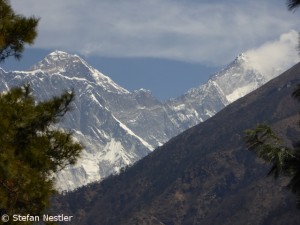

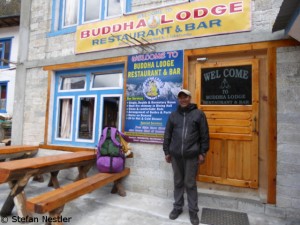
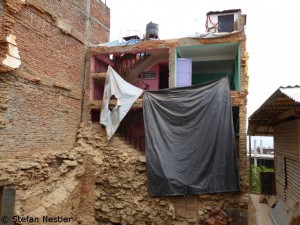


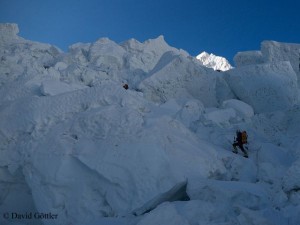
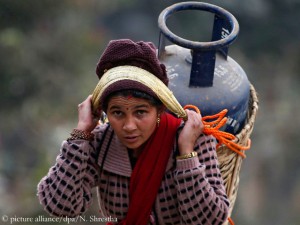
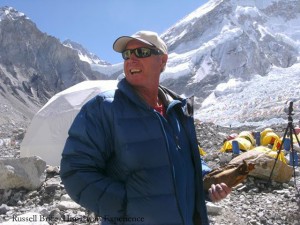
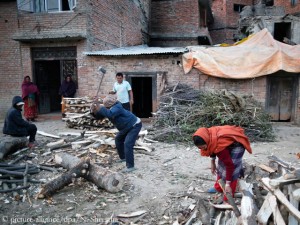
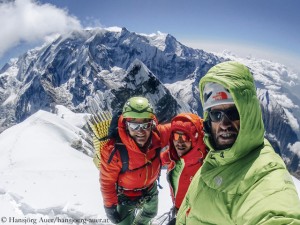

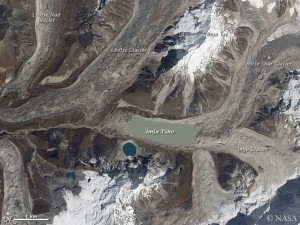
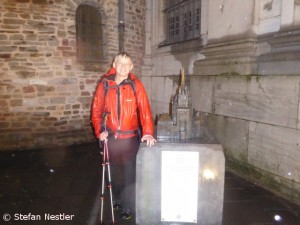
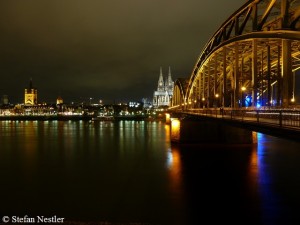






Feedback